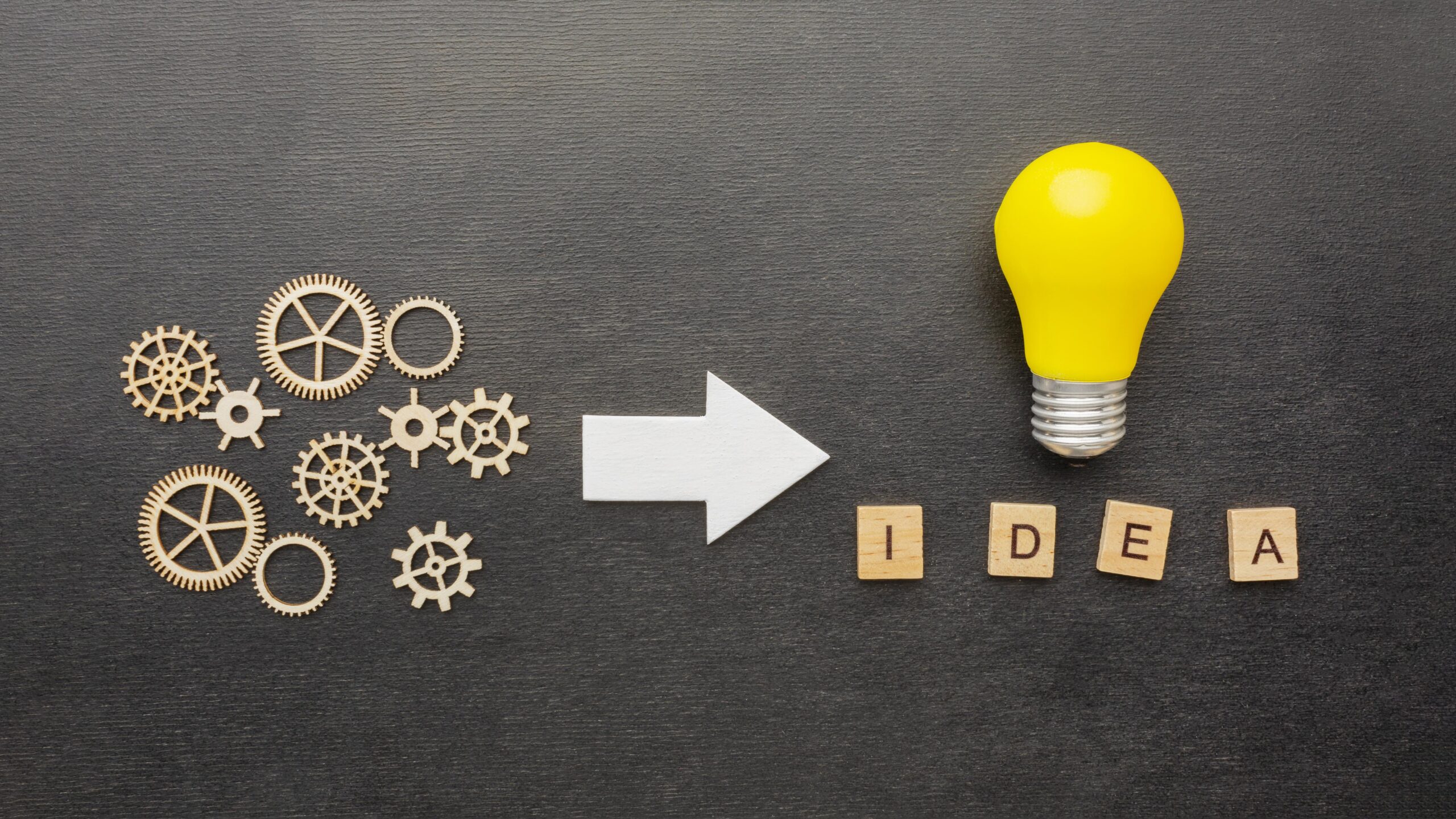I remember a time when my days felt like a constant game of whack-a-mole. Tasks piled up, unexpected issues popped up, and I often felt like I was just reacting to whatever chaos the day threw at me. It was exhausting, and honestly, not very effective. I’d finish the day feeling busy, but not necessarily productive. Sound familiar?
Many of us operate this way, caught in a cycle of firefighting and hoping for the best. But what if there was a different way? What if you could design your life and work to be more predictable, more efficient, and ultimately, more fulfilling? This isn’t about magic or some innate talent. It’s about understanding and applying the power of systems.
My co-host, Brooks Duncan, and I often talk about this on The Productivity Show. We’ve seen firsthand how embracing a “systems mindset” can fundamentally change how you approach everything, from your morning routine to your biggest business goals. Once you start seeing the world through the lens of systems, you truly can’t unsee it. It’s like putting on a new pair of glasses that reveal the underlying structure of everything around you.
What Do We Mean by “Systems” and “Systems Thinking”?

At its core, a system is simply a set of connected parts working together to achieve a specific outcome. Think of it like a recipe: you have ingredients (inputs), steps to follow (process), and a delicious meal (output). Brooks likes to break it down into these three key components:
- Input: The resources, information, or triggers that start the system.
- Process: The actions, steps, or procedures that transform the input.
- Output: The desired result or outcome of the system.
This simple framework is incredibly powerful. When something isn’t working, instead of just trying to fix the symptom, you can look at the input, process, and output to identify the root cause. For example, if you’re consistently feeling tired, it’s not just about drinking more coffee (a temporary fix). It’s about examining your sleep system: What are your inputs (late-night screen time, caffeine)? What’s your process (bedtime routine, room temperature)? What’s the desired output (restful sleep)? By understanding these components, you can make targeted adjustments that lead to lasting change.
Even something as personal as a habit or routine can be viewed as a system. My evening routine, for instance, isn’t just a list of things I do before bed. It’s a system designed to ensure I get great sleep. The input might be a specific time, the process involves dimming lights and cooling the room, and the output is feeling relaxed and ready for bed. A good system, when triggered and followed, predictably leads to the same outcome.
Can You Become a “Systems Thinker”?
Some people are naturally inclined to think in systems, but it’s absolutely a skill you can develop. It’s not a mystical trait reserved for a select few. It’s more like learning a new language or reading a book on body language. Once you understand the principles, you start to see patterns and connections you never noticed before.
For instance, if you read a book on body language, you suddenly become aware of subtle cues in people’s posture or expressions. You realize that a person with crossed arms might not be upset; they might just be cold. Context matters. Similarly, when you become a systems thinker, you start to understand why things happen the way they do. You might realize that poor customer service isn’t due to lazy employees, but a flawed process or an inadequate input in their training system.
This shift in perspective empowers you to not just react to problems, but to proactively design solutions that prevent them from recurring. It’s about moving from firefighting to building a robust, resilient structure for your life and work.
The Three Types of Systems
To help you apply systems thinking, Brooks and I categorize them into three main types: Personal, Work, and Strategic. While there’s often overlap, thinking about them this way can help you identify areas for improvement.
1. Personal Systems: Optimizing You
Personal systems are all about how you manage yourself to consistently show up as your best self. These are the routines and habits that support your well-being, energy, and focus. For Brooks, this includes his morning and evening routines, ensuring he exercises, takes supplements, and winds down properly. He’s systematized these actions so they happen almost on autopilot, removing the need for willpower or decision-making each day.
I’ve found that many of my personal systems evolved from what I call the “three times rule.” If something bothers or annoys me more than three times, it’s a signal that there’s a systemic issue at play. For example, if I consistently wake up feeling unrested, it’s not just a bad night; it’s a sign to examine my sleep system. This led me to optimize everything from my bedtime routine to investing in an Eight Sleep mattress that automatically cools. It’s about finding the root cause and implementing a fix that prevents the issue from recurring.
My daily planning is another personal system that blends into my work. I intentionally control the first few hours of my day, focusing on things like a high-protein breakfast (which I’ve learned significantly impacts my energy levels thanks to a continuous glucose monitor). By setting up these early wins, the rest of my day can flow more freely, even when unexpected things come up.
2. Work Systems: Getting Things Done Efficiently
Work systems are about how you manage your tasks, communications, and collaborations to get things done effectively. This includes everything from task management and email to meetings and delegation.
Brooks starts his workday with a systematic daily review, looking at yesterday’s progress, today’s calendar, and flagging his top priorities in OmniFocus. This structured approach ensures he hits the ground running with clear morning and afternoon goals. He also emphasizes a “clear to neutral” approach at the end of the day, tidying up his digital workspace so he can start fresh the next morning.
I’ve been exploring how AI can revolutionize my work systems, particularly with email. By training AI platforms like Lindy on my decision-making process for different types of emails, I’m aiming to delegate 90% of my inbox management. It’s like having an executive assistant that never sleeps and learns incredibly fast. Similarly, I’m experimenting with AI for my weekly review and even prioritizing my to-do list based on my quarterly and monthly goals. Imagine dumping your entire to-do list into an AI that already knows your strategic objectives and instantly organizes your day, week, and month!
Meeting management is another area ripe for systems. We’ve discussed how AI notetakers can summarize meetings, extract decisions, and even draft follow-up emails. While there’s a cultural learning curve around having multiple AI bots in a meeting, the potential for efficiency is immense. Tools like Granola.ai, which records locally without a visible bot, are emerging to address these concerns, showing how technology continues to evolve to support our systems.
When it comes to calendars, I use Fantastical, and while Brooks uses its built-in scheduling feature, I still rely on Calendly. Why? Because I have multiple custom links for different types of meetings—podcast recordings, coaching sessions, onboarding calls. This system allows me to offer flexibility while maintaining control over my schedule, ensuring I’m always prepared for the conversation.
3. Strategic Systems: Staying Aligned and Focused
Strategic systems are the higher-level processes that ensure you stay aligned with your long-term goals and make progress on what truly matters. These aren’t daily tasks, but they are crucial for sustained growth and avoiding stagnation.
The weekly review is arguably the most impactful strategic system. It’s a dedicated time to reflect on what worked, what didn’t, and to adjust your course for the week ahead. While many people might do it inconsistently, making it a non-negotiable part of your week provides immense clarity and prevents things from falling through the cracks.
Goal setting is another vital strategic system. We advocate for a quarterly or 90-day approach. This timeframe is long enough to make significant progress but short enough to maintain a sense of urgency. By setting clear goals and creating an action plan every 90 days, you ensure you’re always moving forward on the right path.
Strategic systems also involve looking back and learning. Reflection, journaling, and dedicated thinking time allow you to analyze past experiences, understand what contributed to success or failure, and use those insights to inform future decisions. It’s this continuous feedback loop that truly accelerates your growth.
If you can master your personal and work systems, introducing these strategic systems becomes much easier. They build upon each other, creating a powerful framework for a more productive, happier, and aligned life.








